Rock Physics
All rocks contain mechanical discontinuities on many length scales. These discontinuities, such as grain contacts, cracks, fractures, or joints, are sources of anisotropy and inhomogeneity. They influence and control the mechanical and hydraulic behavior of a rock mass. The geometries of the voids and fracture networks control the transport of water, contaminants, gas, or oil through a fractured rock mass. Fractures and cracks are often planes of mechanical weakness and instability, and determine the success or failure of engineering structures built in or on a fractured rock mass. The research areas listed below have the common aim of quantitatively establishing the links among the mechanical, hydraulic, and seismic properties of these discontinuities.
Wave Propagation in Fractured Media
 Dispersion relationships and scattering behavior of elastic waves are investigated for fractures subjected to varying conditions, such as normal & shear loads, reactive fluids and pore pressures.
Dispersion relationships and scattering behavior of elastic waves are investigated for fractures subjected to varying conditions, such as normal & shear loads, reactive fluids and pore pressures.
Fracture Geometry
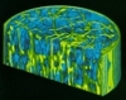 Fracture geometry includes surface roughness, length, the size and spatial distribution of contact area and fracture aperture, number/density of fractures, fractures spacing, orientation and connectivity.
Fracture geometry includes surface roughness, length, the size and spatial distribution of contact area and fracture aperture, number/density of fractures, fractures spacing, orientation and connectivity.
Fluid Flow, Stiffness & Scaling
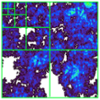 The hydraulic, mechanical and seismic properties of fractures are interrelated through the geometry of a fracture.
The hydraulic, mechanical and seismic properties of fractures are interrelated through the geometry of a fracture.
Porous Media
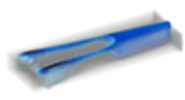 Results from immiscible fluid displacement experiments in micro-fluidic cells containing 2D porous media provide data to test theoretical averaging theorems and the effect of films on these processes.
Results from immiscible fluid displacement experiments in micro-fluidic cells containing 2D porous media provide data to test theoretical averaging theorems and the effect of films on these processes.
Particle Swarms
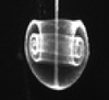 Understanding the physical processes that affect swarm transport in fractures in rock is required to control the deployment of future sensor swarms in the subsurface.
Understanding the physical processes that affect swarm transport in fractures in rock is required to control the deployment of future sensor swarms in the subsurface.
Food
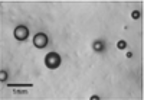 A few examples on the use of ultrasonic wave propagation to characterize food.
A few examples on the use of ultrasonic wave propagation to characterize food.